In just a few years, Dubai’s cityscape has changed dramatically. From the first timid skyscrapers, the Emirate’s skyline has been populated with futuristic buildings of all shapes and sizes. Capital of the most exaggerated architecture, Dubai is a destination not to be missed if you want to visit some of the world’s tallest skyscrapers and buildings of the most incredible shape. You can go inside almost all of them because they are house museums, attractions, hotels or restaurants!
Table of Contents
The Dubai skyline: tallest skyscrapers and curious shapes
The first skyscrapers in Dubai were built around the main street, Sheikh Zayed Road. However, within a very short time, they were surpassed in height by incredible new projects in other urban areas. For instance, the Jumeirah Lakes Towers district, abbreviated to JLT, is home to numerous office skyscrapers. In contrast, Dubai Marina and Jumeirah Beach Residence, called JBR by locals, are home to residential buildings, restaurants and other attractions for tourists and expats.
PLAN YOUR TRIP TO DUBAI
Save money with the Dubai Go City Explorer Pass and enjoy free access to the city’s top attractions such as the sightseeing bus tour, dhow cruise, Aquaventure water park, desert safari, and Burj Khalifa.
To stay connected in the UAE, remember to buy an Airalo eSim online, with data and phone coverage for your trip to Dubai. About travel insurance, Heymondo provides excellent value for money and offers comprehensive coverage against unexpected events like medical emergencies, trip cancellations, lost luggage, and more.
Until some years ago, these areas were desert or construction sites. Returning to Dubai and finding new neighbourhoods alive and complete was the surprise that made me appreciate the city the most. Most buildings now occupying Dubai’s skyline were only built in the 2000s.
Dubai is home to more dizzying skyscrapers, over 300 metres, than any other city in the world. The design of the buildings follows the wildest creativity of designers, with futuristic and innovative forms. In addition to the iconic sail-shaped Burj Al Arab building, you can see the Arabic-lettered ring of the Museum of the Future. Or the Cayan Tower, the only skyscraper whose top is turned 90 degrees from its base!
19 incredible buildings to see in Dubai
To give you an example of what you can see in Dubai, I’ve compiled a list of the Emirate’s most iconic buildings, including dizzying heights and bold shapes. Visiting these architectural works, or at least admiring them from the outside, will be one of the most iconic experiences of your trip to Dubai.
1. Burj Al Arab: the soaring palace with a seven-star hotel
I start this list with the Burj Al Arab, the iconic sail-shaped palace commissioned to make Dubai recognisable worldwide. For its unusual shape, architect Tom Wright was inspired by the sail of the dhow, the typical boat of the Arab Emirates. The façade is made of fibreglass, shielding the desert sun during the day and serving as an unusual screen for lighting at night.
Built on an artificial island overlooking Jumeirah Beach, the Burj Al Arab’s records include the heliport that hosted the historic tennis match between Roger Federer and Andre Agassi, a fleet of Rolls Royce limousines and the number of stars in its hotel. The Burj Al Arab called itself ‘the only seven-star hotel in the world’ because it has only suites. However, the international classification only recognised the classic five, positioning it as a five-star luxury.
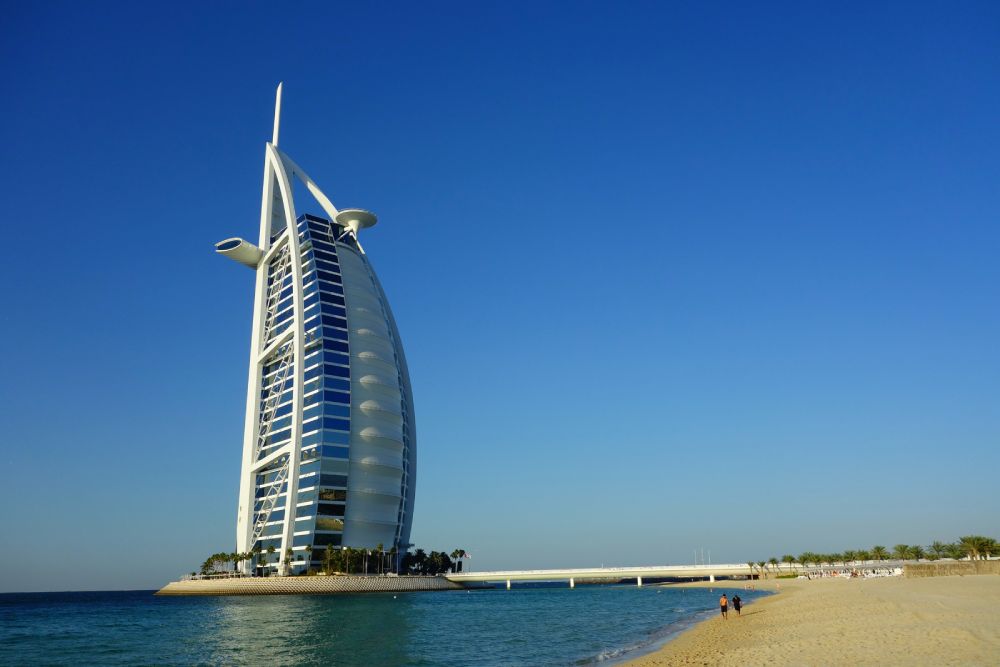
2. Burj Khalifa: one of the world’s tallest skyscrapers
With a dizzying height of 828 metres, it is one of the tallest buildings in the world, surpassed only by the Jeddah Tower in Saudi Arabia. Its space rocket-like shape perfectly reflects the spirit in which it was built, seemingly a bid to construct the tallest building.
In reality, the Burj Khalifa’s shape echoes the hymenocallis flower’s shape, as you can see in the videos taking it from above. To make it even more spectacular, the surface is covered with 28,000 glass panels that light up in the evening in a music and light show you can admire from the Dubai Mall.
The Burj Khalifa can also be visited by booking a dinner at the restaurant on the 122nd floor or by going up to the two viewing points: the first on the 124th and 125th floors and the second on the 148th floor. Ticket prices vary according to the floor and time of day you wish to visit. Sunset is more expensive because it is the most scenic time for discovering Dubai from above.
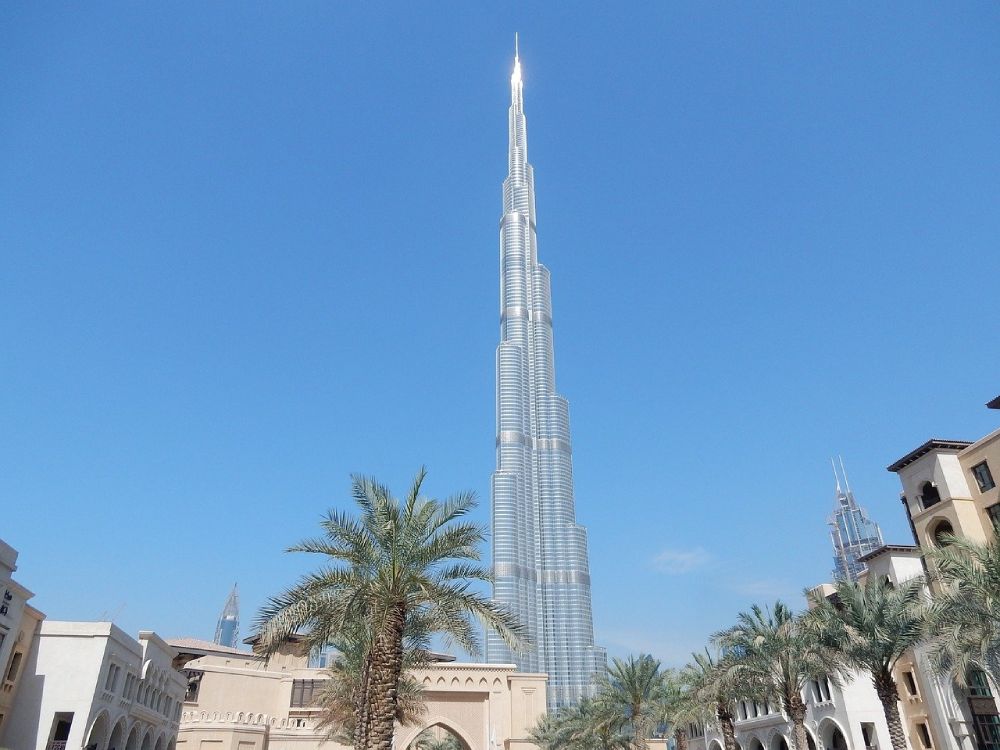
3. Dubai Frame: the world’s largest frame
One of the Emirate’s most incredible attractions is the Dubai Frame, a gigantic frame framing the old city on one side and the futuristic skyscrapers built in recent years on the other. Designed to create the world’s largest frame, this 150-metre-high building consists of two columns with panoramic ascenders and a walkway with a transparent floor.
A unique feature of the Dubai Frame’s viewing point is the centre of the floor, which changes from opaque to transparent at the rhythm of your footsteps. Visiting this incredible Dubai attraction passes through the Emirate’s history through the exhibition areas of Old Dubai Gallery, Present Dubai and Future Dubai Gallery.
Between selfie stations and green screens with a photographer, the visit is punctuated by moments to remember before arriving at a Dubai Frame-themed gift shop, where you can admire an incredible number of gilded frames all at once.
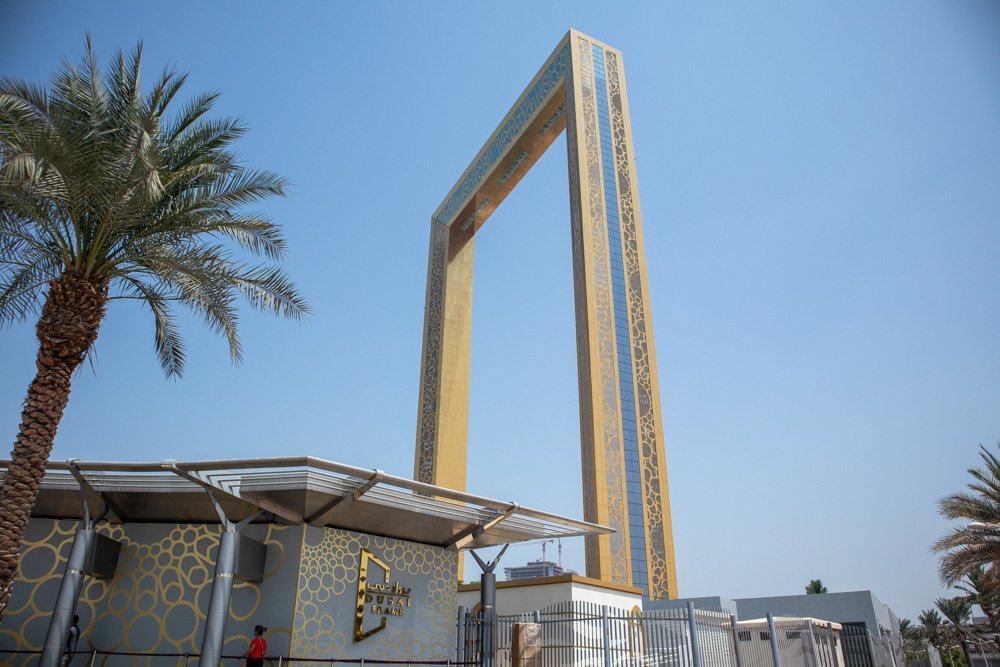
4. Museum of the Future: a glimpse into the next global development
With its incredible oval shape decorated with Arabic script that lights up as the sun goes down, Dubai’s Museum of the Future is one of the attractions built for Expo 2020 (postponed to 2021 due to the COVID-19 pandemic). The exhibition space is inspired by the immersive exhibitions on government services, healthcare, climate change and food security created over the previous five years for the World Government Summit, a global platform held annually in Dubai.
The four floors of the Museum of the Future focus on the possible futures of resource development, ecosystems and bioengineering, with space dedicated to presenting the technologies of the near future. On the other hand, the top floor is entirely devoted to children, with a world to explore and challenges to complete.
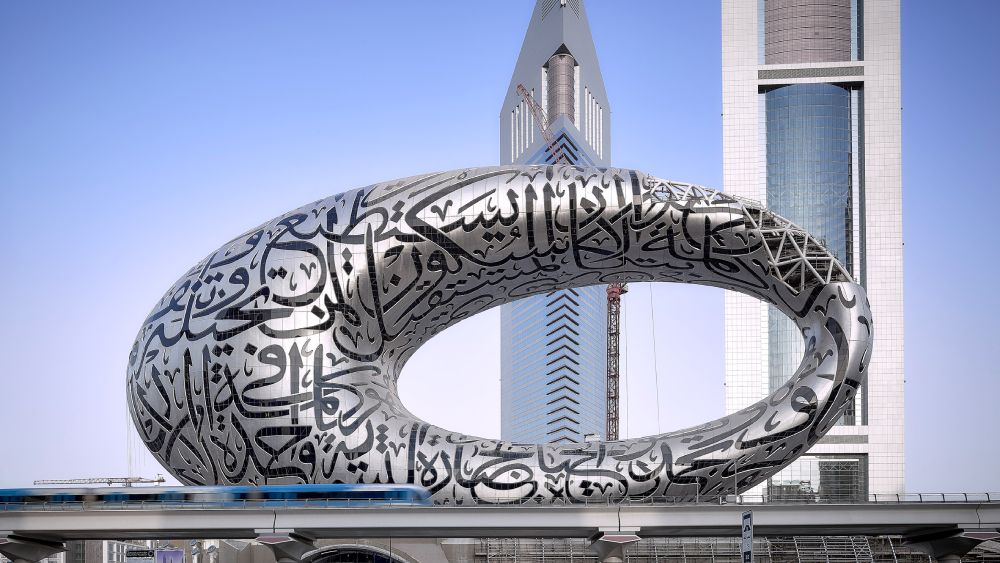
5. Etihad Museum: the museum of the UAE’s birth
The Etihad Museum is one of the most beautiful history museums in the world. Futuristic architecture and multimedia installations accompany visitors on the journey to unite the United Arab Emirates. The museum’s itinerary traces the choice of the emirates of Abu Dhabi, Ajman, Dubai, Fujairah, Ras al-Khaimah, Sharjah and Umm al-Qaywayn to become a federation.
The building’s shape echoes the parchment of the unification treaty. At the same time, the golden columns at the entrance represent the pens with which it was signed. The large empty spaces are interspersed with blow-ups of the fathers of the homeland and films of the UAE’s achievements for a museum that certainly does not go unnoticed. Indeed, its 25,000 square metres is an architectural masterpiece that aims to impress visitors.
After a visit to the Etihad Museum, you will gain a clearer understanding of the past and history of Dubai and the other Emirates, with insights into life in the days of the British protectorate of the Truce States and the creation of the current nation. The futuristic vision of the ruling emirs originates from the time of independence and the discovery of oil.
If you want to see this museum, I advise buying tickets online before you leave because they sell out quickly. During my visit to the Etihad Museum, I found a few people, but sometimes it can be very crowded.
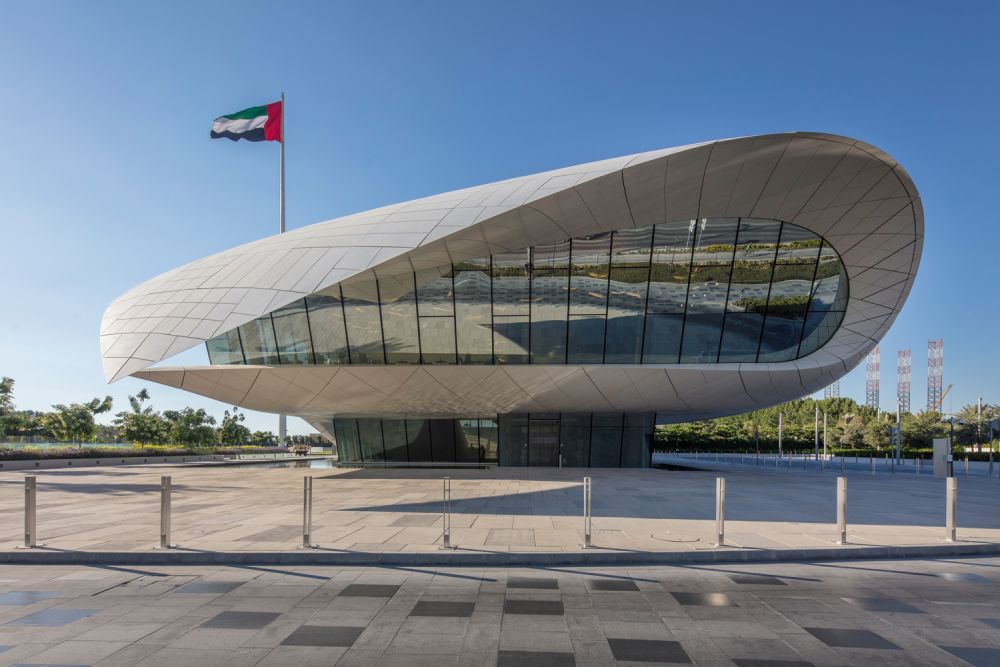
6. Emirates Towers: the almost twin towers of Dubai
The Jumeirah Emirates Towers complex is located along Sheikh Zayed Road, a short distance from the Museum of the Future and the world’s largest shopping mall Dubai Mall. Within its towers are the Emirates Office Tower and the Jumeirah Emirates Towers hotel, as well as the 9,000-square-metre shopping area The Boulevard spread over two floors.
The two Emirates Towers look like twins but have a different number of floors. The office tower is 355 metres high with 56 floors above ground. The tower housing the Jumeirah Emirates Towers hotel is 241 metres high with 54 floors. The reason for the significant height difference despite a similar number of floors is that the heights of the individual floors of the office tower are greater than those of the hotel.
For a time, the Emirates Towers were the tallest buildings in Dubai, even though they now appear almost modest compared to the current panorama. In contrast, the Jumeirah Emirates Towers hotel is a respectable establishment, with 400 luxurious rooms and suites, award-winning nightclubs and restaurants such as the Rib Room and Mundo, 24/7 butler and concierge services, as well as two kilometres of private beach on the Jumeirah coastline.
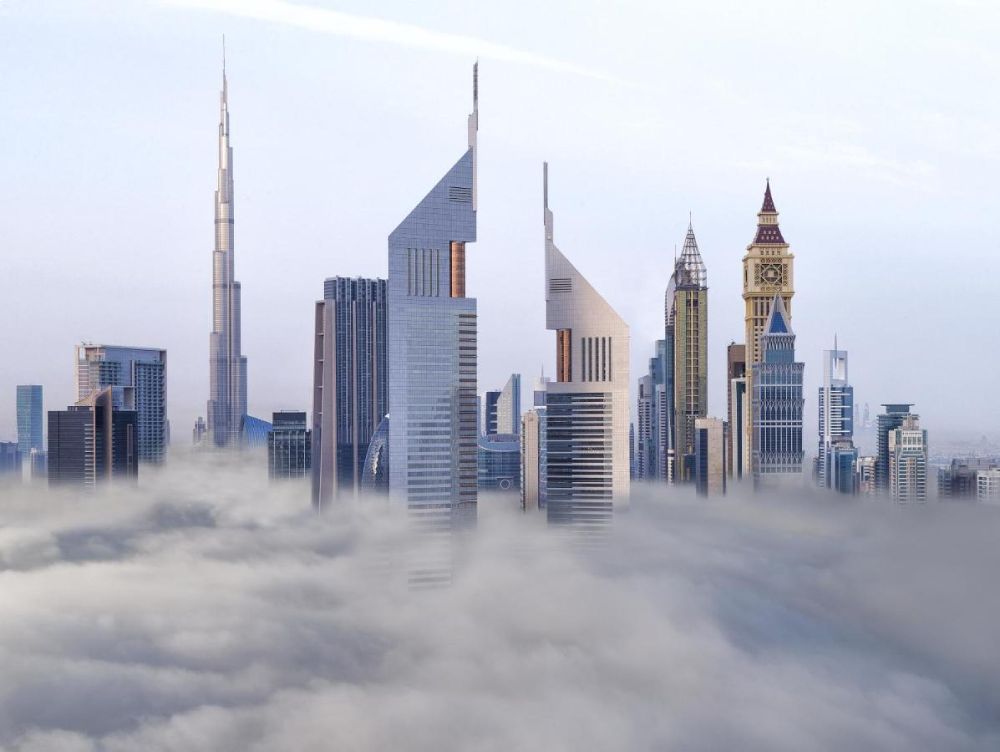
7. Cayan Tower: Dubai’s tower turned 90 degrees
The Cayan Tower is a 75-storey, 306-metre-high skyscraper in Dubai which, prior to its inauguration, earned the nickname Infinity Tower because of its height. Its unique feature is a 90-degree twist that earned it the record for the tallest skyscraper in the world with this structure. Unfortunately, even the shape record was only held for a very short time, just two years. It was surpassed in 2015 by the Shanghai Tower in China.
The Cayan Tower’s unique design was achieved by rotating each floor 1.2 degrees around a cylindrical lift that makes up the structure’s core. Unfortunately, there are no hotels inside, but you can rent a flat to discover unique details, such as reconstituted wood floors, synthetic marble countertops, and titanium-coloured metal panels to keep the rooms unaffected by direct light.
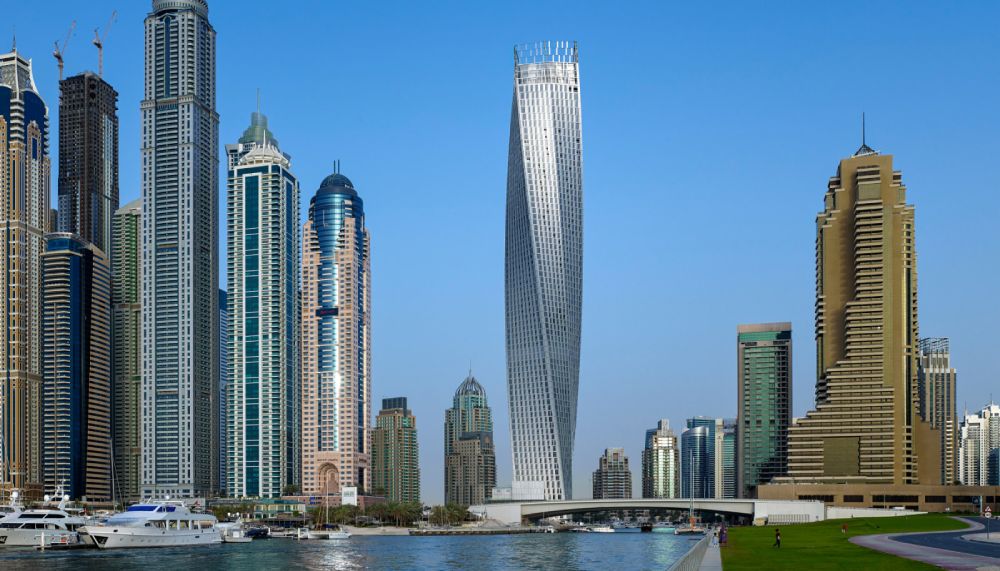
8. DIFC The Gate: the triumphal arch of Dubai’s financial district
The Dubai International Financial Centre (DIFC) is halfway between the Emirates Towers and the World Trade Centre. It is the building that identifies Dubai’s financial district. The Parisian Arc de Triomphe inspires its shape, and the entire district offers visitors architecture, art galleries, shops, flats, and restaurants. You may never pass by as a tourist, but you must admit that its square arch shape does not go unnoticed!
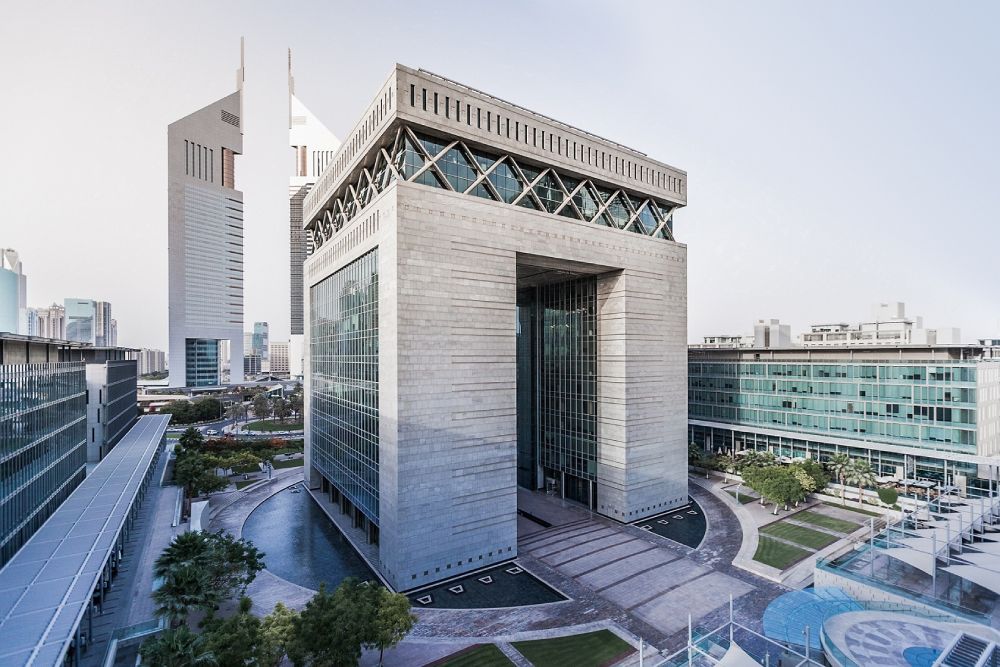
9. Jumeirah Beach Hotel: the wave-shaped luxury family hotel
An architectural icon on Dubai’s waterfront, the Jumeirah Beach Hotel’s shape is inspired by a wave, and its aquatic theme is evident in all its facilities. Although it is impossible to rank the best hotels in Dubai, given the constant pursuit of luxury, the Jumeirah Beach Hotel certainly ranks one of the best family hotels. Its facilities include a private beach, five swimming pools, one of which is dedicated to the little ones, and free access to the nearby Widi Wadi water park.
Thanks to the Sinbad Kids Club for children and The Hub Teen Club for teenagers, parents staying at the Jumeirah Beach Hotel can enjoy the Talise Spa with Jacuzzi, sauna and treatments, the Talise Fitness gym and the tennis and squash courts. On the other hand, the Jumeirah Beach Hotel offers over sixteen restaurants and bars, from the poolside restaurant to the rooftop club and the classic Lebanese, Italian or Japanese cuisine restaurants that are very popular in Dubai.
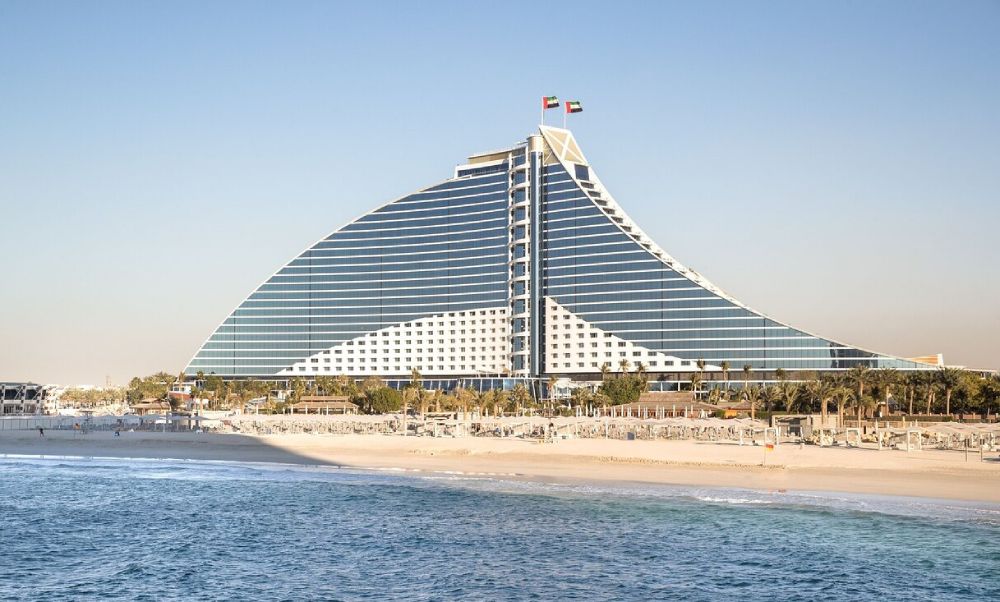
10. Atlantis The Palm: the luxury of the lost city of Atlantis in Dubai
Another iconic and luxury hotel in Dubai is the Atlantis The Palm, whose building is inspired by none other than the lost city of Atlantis. It is on the most scenic spot on the artificial island The Palm Jumeirah, another symbol of Dubai. The building’s interiors incorporate elements of the ocean. Some of the hotel’s suites offer the most opulent ocean-view luxury, with a glass ‘window’ onto the aquarium to see the fish swimming in front of your bed.
In addition to the standard offerings of Dubai hotels, such as Kid Club, swimming pools, and a private beach, Atlantis The Palm offers incredible, one-of-a-kind experiences for couples and families, from starred dining to theme parks. The complex includes Atlantis Aquaventure, the largest water park in the world, and The Lost Chambers Aquarium, an aquarium inspired by the mysteries of the lost city of Atlantis.
Inside the Atlantis The Palm complex, in the space called Ambassador Lagoon, live 65,000 marine animals. Hotel guests can visit the aquarium for free, but if you can’t afford the not-so-affordable luxury of Atlantis The Palm, you can buy a separate aquarium ticket and visit this wonderland.
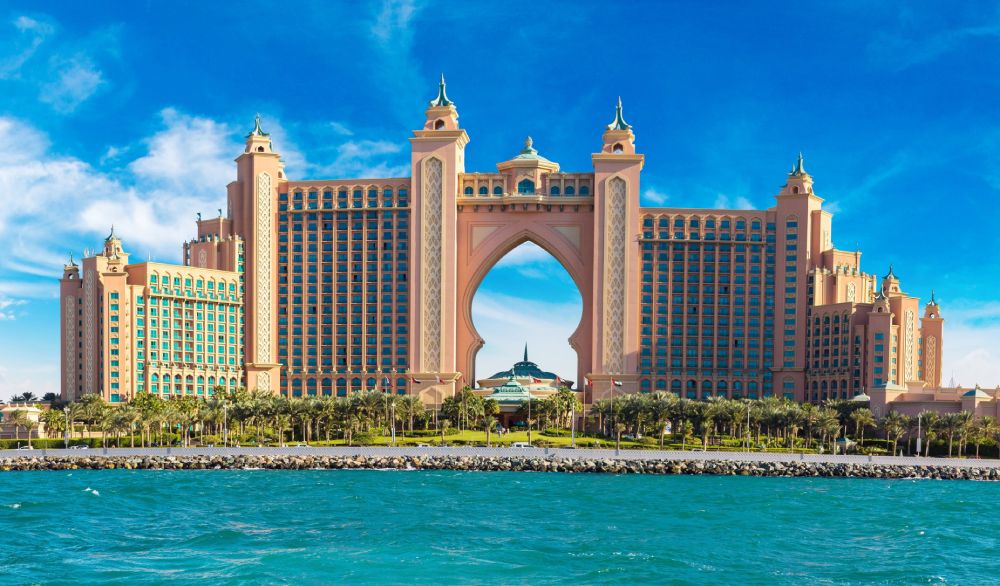
11. Al Salam Tower (formerly Chelsea Tower): one of Dubai’s first vertiginous skyscrapers
The Chelsea Tower, now called Al Salam Tower, is another of Dubai’s iconic skyscrapers you can admire as you walk down Sheikh Zayed Road. Its height is ‘only’ 250 metres by 49 storeys, putting it in 47th place in the ranking of the tallest buildings in the Emirate at the time of writing. In 2005, as soon as it was completed, the Chelsea Tower was the fifth tallest building in the city, which gave you an idea of the speed with which Dubai aimed to realise the ambitions of the royal family.
The name Chelsea Tower comes from the Chelsea Hotel Group, which previously operated the hotel within it. It has now been rebranded as Al Salam Hotel Suites. The suites of the Al Salam Tower are actual flats in residence, equipped with all the comforts and Smeg appliances of unmistakable design.
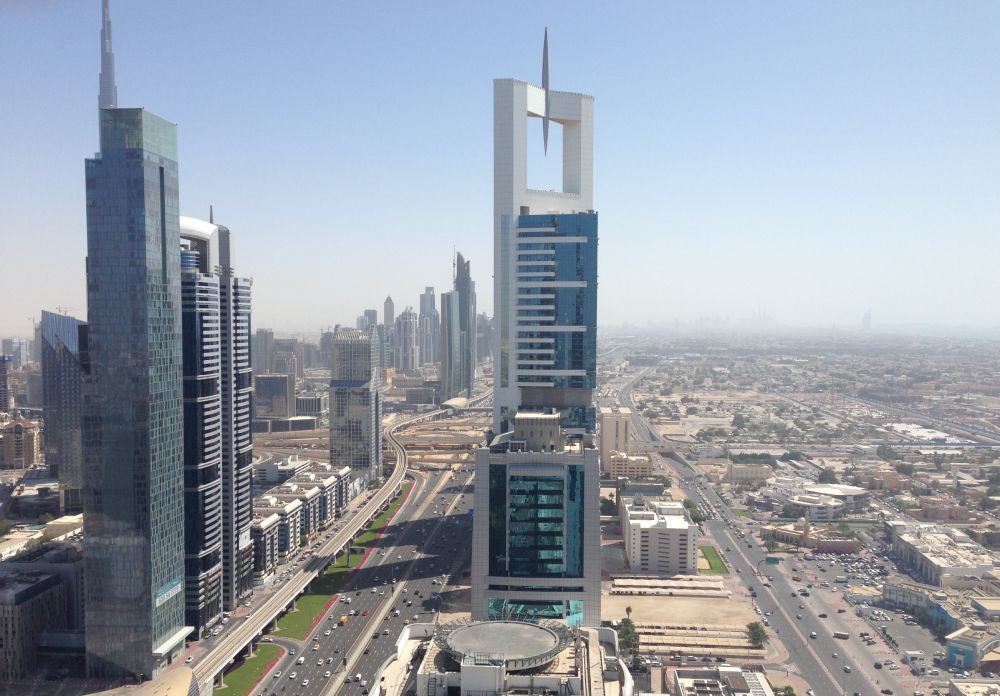
12. Etisalat Tower 2: the skyscraper with the golf ball
The Etisalat Tower 2 is the second skyscraper of Etisalat’s communication company in Dubai. Etisalat provides communication and internet services throughout the Arab Emirates. Its buildings are recognisable by a giant golf ball on top of them. If you visit Dubai along with other Emirates, you might notice other Etisalat Towers in Abu Dhabi, Fujairah, Sharjah, Ajman and El Ain!
The first Etisalat Tower was built in Dubai in 1992 and, at the time, was one of the Emirate’s tallest skyscrapers at 17 storeys and 100 metres high. As it was probably not tall enough to show the world the reliability and power of Etisalat’s connections, it was replaced in 2007 by Etisalat Tower 2, almost twice as tall, with 30 floors for 185 metres, designed by Canadian architect Arthur Erickson and decorated at the top by the typical oversized golf ball.
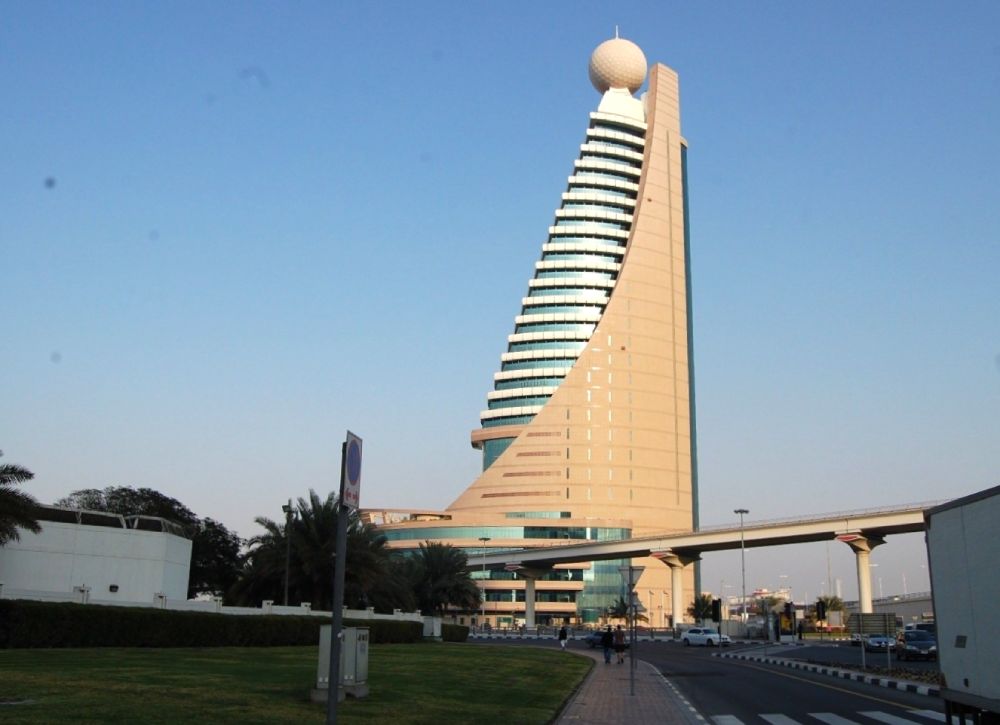
13. Address Downtown Dubai: the ‘small’ skyscraper behind the Dubai Fountain
The Address Downtown in Dubai is a respectable residential skyscraper with 63 storeys and 302 metres in height. However, today, it is almost small and insignificant in the urban landscape due to its proximity to the Burj Khalifa. Inside, it is a hotel and a residence, perfect for exploring the city as it is within walking distance of the Dubai Mall and the Dubai Fountain. Inside the Address Downtown Hotel are suites overlooking Dubai Fountains and panoramic restaurants, again with a Dubai Fountain view to enjoy the evening show.
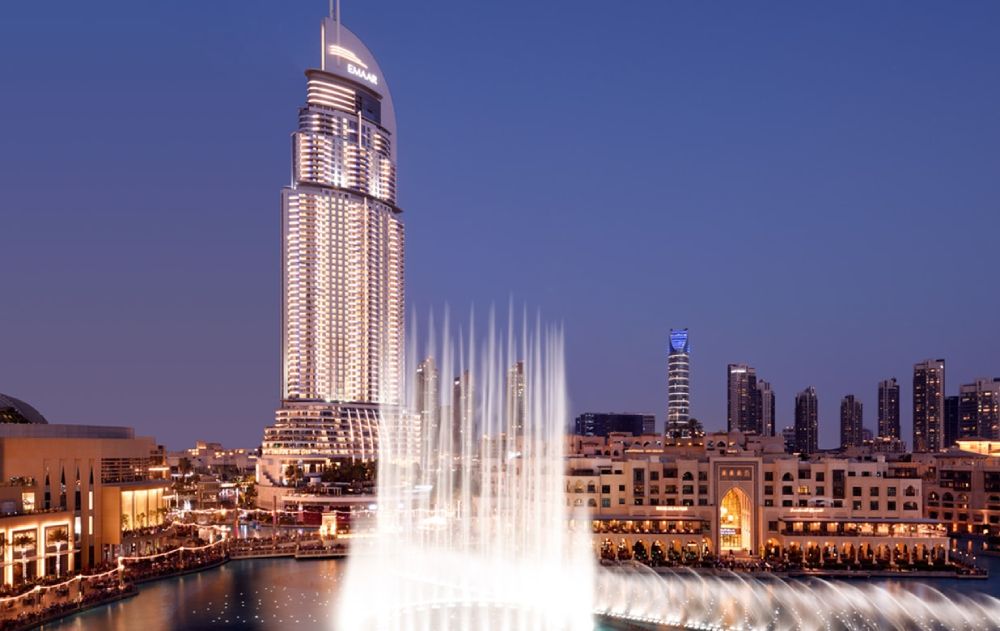
14. Index Tower: the skyscraper with exposed concrete
The Index Tower won the “Best Tall Building Middle East & Africa” award at the Council on Tall Buildings and Urban Habitat in 2011 for its innovative design with exposed reinforced concrete. The building is easily recognisable in the Dubai skyline. Still, it owes its name – translatable as ‘index’ – to the skyscraper’s unique functional organisation. Divided into 80 floors, it houses offices, shops, flats, a swimming pool and a gymnasium.
The Index Tower’s structure consists of four large concrete structures that taper slightly in height and are reinforced by buttresses on both short sides of the building. Thanks to this system, the office floors have a length of 27 metres without structural encumbrances, so the interior spaces can be organised without any restrictions.
The external appearance of the Index Tower helps you understand the division of the spaces into two blocks: offices on the lower 25 floors and residential areas on the upper ones. In the middle is the three-storey sky lobby, almost entirely made of transparent glass, with services for the residents, such as reception, restaurants, and wellness areas. At the same time, the four floors at the bottom are the service floors.
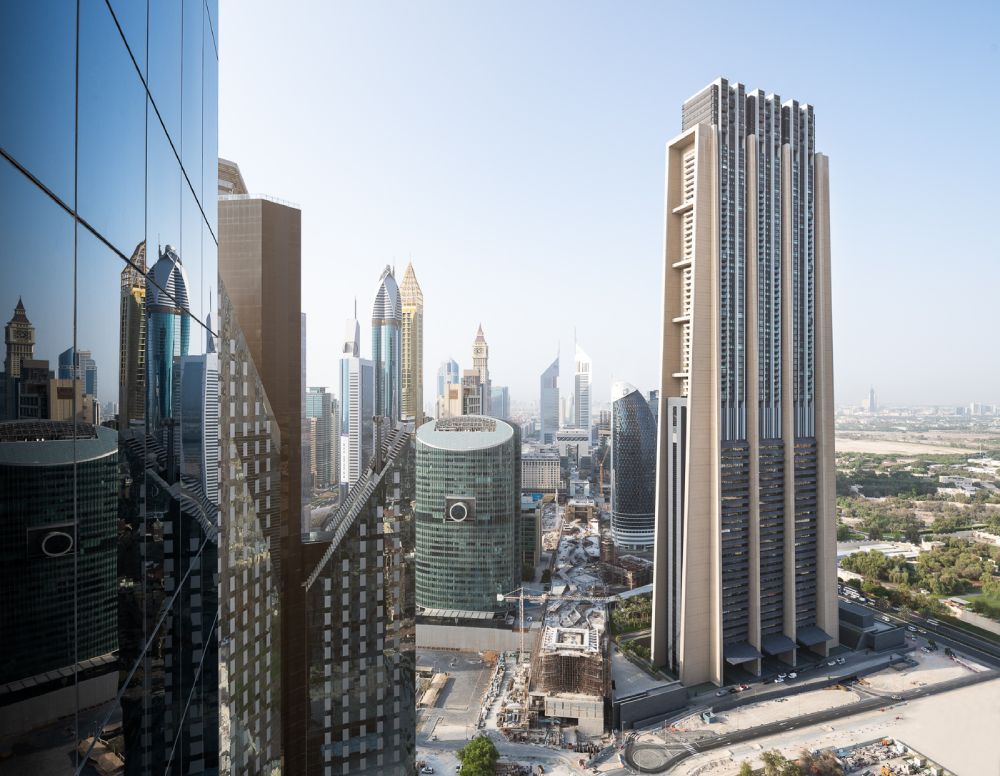
15. Dusit Thani Hotel: Thai luxury in Dubai
The Dusit Thani Dubai is an iconic five-star luxury hotel that captures the essence of Thailand. Its structure is memorable for being divided into two separate towers, connected on the 24th floor at a height of 86 metres. A total of 50,000 cubic metres of concrete with 9,000 tonnes of steel reinforcement were used to realise the unique shape of this building.
The main reason for visiting the Dusit Thani Hotel, however, is that it is one of the few authentic Thai hotels in Dubai. Guests are greeted with the traditional Thai greeting ‘sawadika’, a cold towel and a refreshing lemongrass drink in the lobby, just like in Thailand. The furnishings and interiors reflect the traditional Thai style, with a colour scheme ranging from red to brown.
If you love Thailand, you can book a dinner at the Dusit Thani Hotel’s Thai restaurant and enjoy the best dishes in an exceptional building with a view of Burj Khalifa.
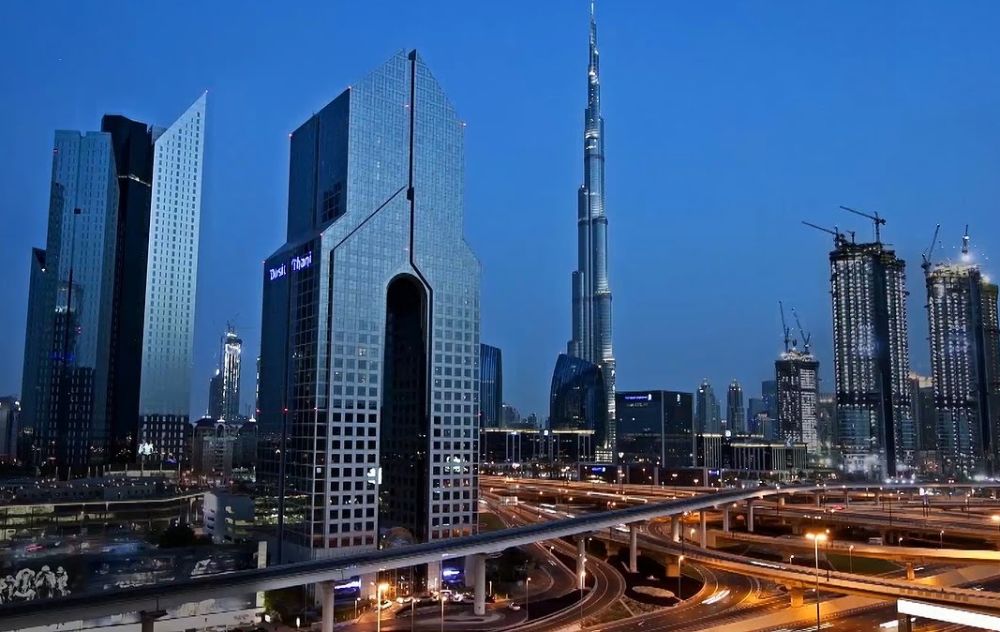
16. 23 Marina: the luxury of living in a residential building with a private pool
At 393 metres high, 23 Marina is one of the tallest skyscrapers in Dubai and also ranks among the top ten tallest exclusively residential skyscrapers in the world. Prior to the completion of the nearby Princess Tower, it even topped the list of the world’s tallest residential buildings. However, it probably still holds the record for swimming pools and private lifts per flat, as there are no less than 57 swimming pools inside the building!
Another record for 23 Marina is the number of flat sales before construction began: 79% of the building’s properties were sold when the project was still only on paper. I would like to visit 23 Marina, but there are no hotels and restaurants inside, only luxury flats, none of which are for rent on the booking sites at the time of writing.
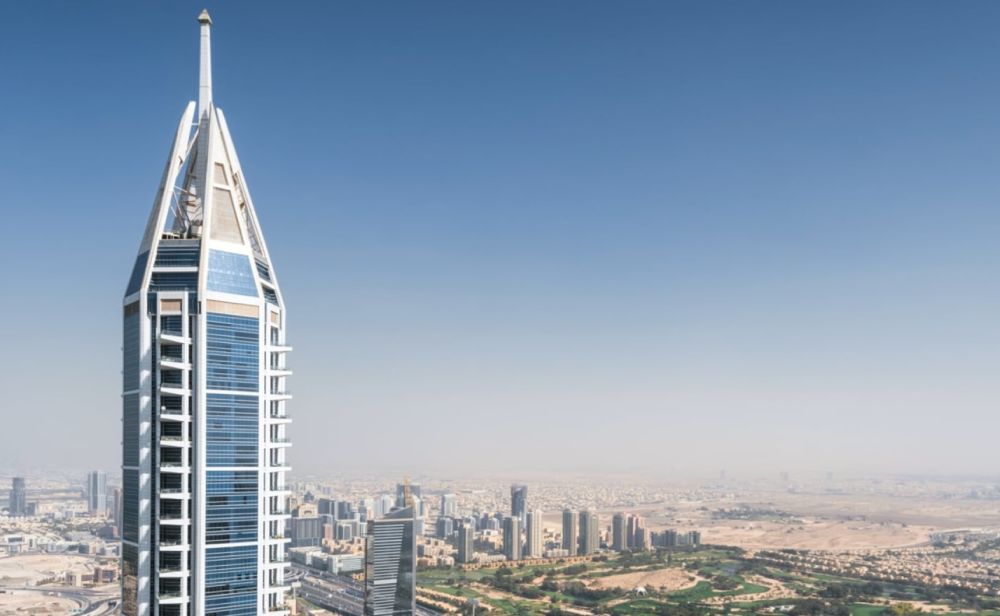
17. Raffles Hotel: an Egyptian pyramid in the heart of Dubai
The Raffles Hotel pyramid from the outside looks like the kitschiest thing in Dubai (coming from someone who loved the Dubai Frame), but the Raffles brand is synonymous with elegance and good taste, and one of my top ambitions to stay in Singapore. After seeing this building from the outside, I promised myself that I would look into it further. However, I am so blown away by the design of this hotel that I still can’t make a judgement!
The architecture of the building in which Raffles Hotel Dubai echoes many aspects of the ancient pyramids of Egypt. It is next to the Wafi City Mall, which is also Egyptian-themed. The hotel is 97 metres high and 19 storeys high, more or less maintaining the same height as the Egyptian pyramids. The predominant colour in the décor is gold. The same colour represents the royalty of the pharaohs. At the same time, the interiors are deliberately opulent to recall the treasures enclosed in the pyramids.
From online reviews, the Raffles Hotel in Dubai appears to blend Raffles’ signature colonial Asian style with Middle Eastern style and an Egyptian-inspired aesthetic. In fact, inside the pyramid, you can admire a tropical garden reminiscent of Singapore’s botanical gardens, whose dome, however, is a stained-glass window in the shape of the Eye of Horus.
At the same time, the hotel’s nine restaurants and bars offer internationally themed cuisines and settings. It, therefore, becomes impossible to tell from the outside whether this is designed with grand ambitions or mere ostentation of luxury. I will have to come back and experience it for myself to find out.
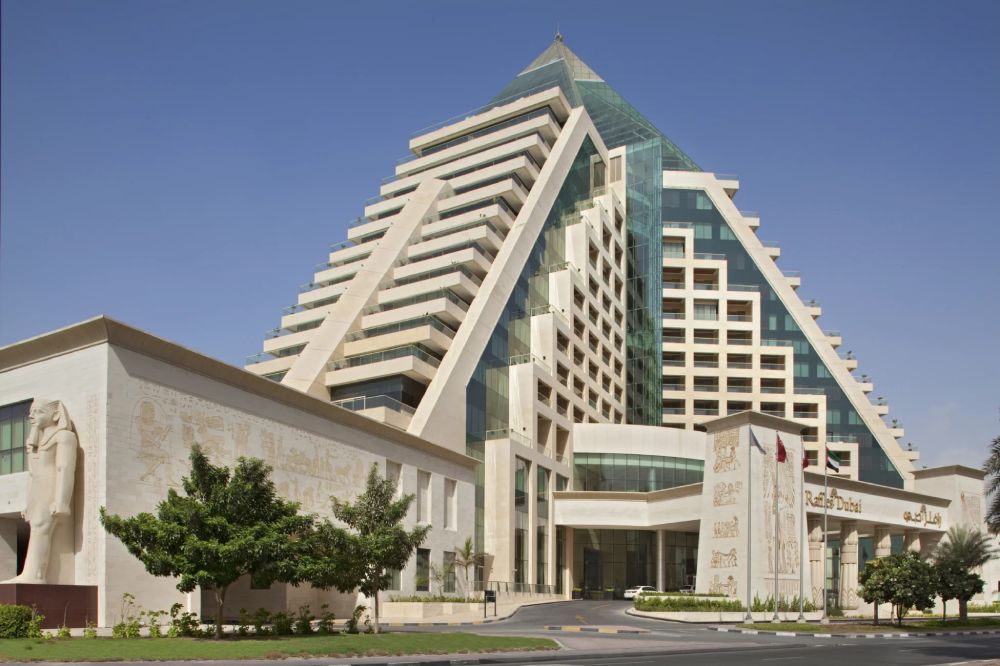
18. The View: the observatory deck of Palm Jumeirah
With all the skyscrapers in Dubai, to admire the city’s skyline, you have to do it from above, as you discovered when reading about the Burj Khalifa. To admire the palm-shaped artificial island of Palm Jumeirah, however, you can either skydive or go up to The View.
This building offers an incredible 360-degree view of the Palm from the 52nd floor of the Palm Tower. It features an interactive exhibition detailing the Palm Jumeirah artificial island’s history, construction technology and design. The lift in The View is part of the experience as it takes you from underwater to above the clouds in seconds, thanks to interactive screens.
The View attraction opened in 2021 for Expo 2020 (moved up a year due to the pandemic). It is therefore worth a visit for a not-yet mainstream experience and to discover the behind the scenes of Dubai’s ambitious artificial islands engineering project.
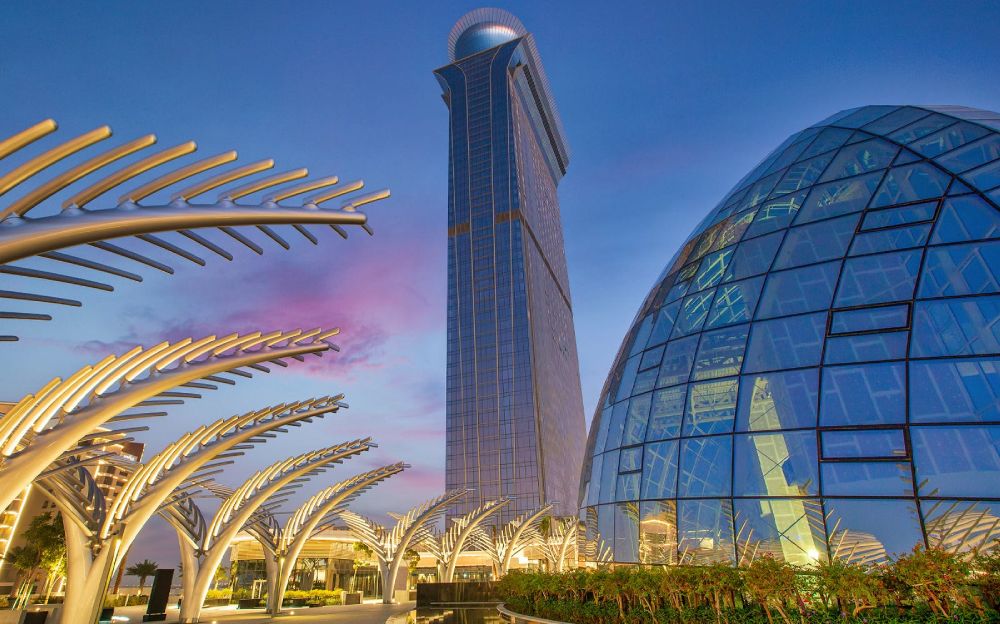
19. Dubai Mall: the world’s largest shopping mall
The Dubai Mall is more than just a giant mall. It’s much bigger than anything you can imagine. Inside, you can get lost, literally. I got lost from the toilet to the restaurant. It is no coincidence that in every ‘square’ there are information points with friendly uniformed staff whose job it is to help you find your way to the shops.
At the Dubai Mall, in addition to luxury designer labels, you can also buy beautiful souvenirs at the official tourist shop or any item of clothing, food or electronics in the shops of the big international chains. However, The Dubai Mall is a record-breaking shopping mall, as is the whole of Dubai.
Among the must-see attractions of the Dubai Mall are Dubai Dino, a real dinosaur fossil, the Dubai Aquarium & Underwater Zoo with thousands of fish housed in over ten million litres of water, the Dubai Ice Rink, the Kidzania theme parks for children and SEGA Republic for video game lovers, the flight simulator on an Emirates A380 and much more.
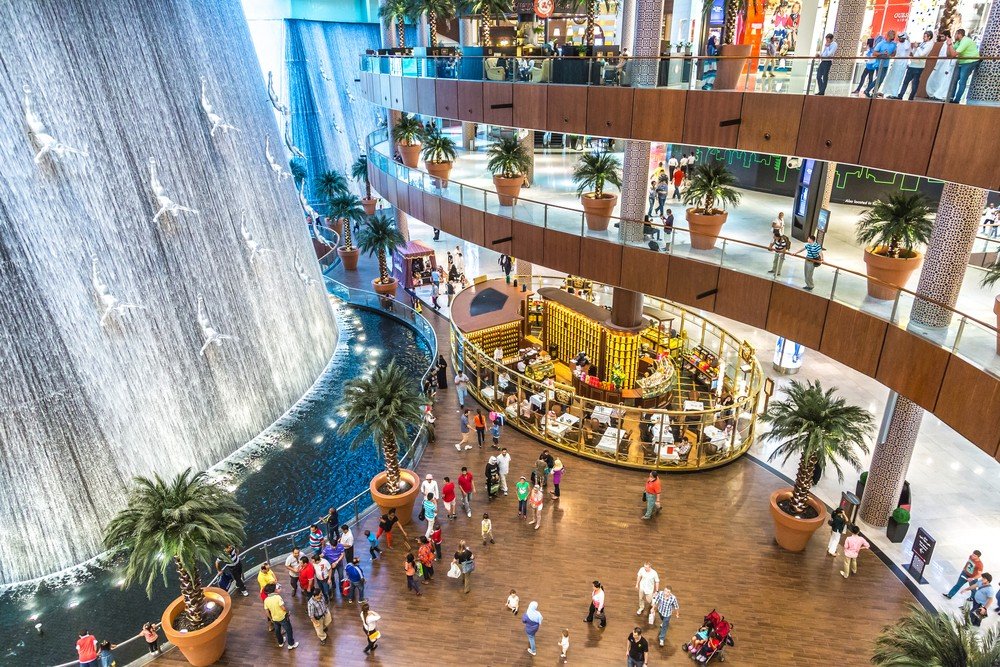
As Dubai is constantly developing, let me know in the comments if there are other impressive buildings to add to this list and which one impressed you the most.
